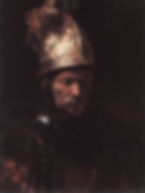
The Arts
7 Colour Contrasts
CONTRAST OF HUE
The contrast of intense, undiluted colours. At least three distinct hues are required to illustrate this contrast. The most extreme contrast is the PRIMARY contrast of RED, YELLOW and BLUE. The Intensity of contrast diminishes as the hues are removed fromthe pure primary colours.


Apocalypse de Saint Sever. 11th c France

May from Les Tres Riches Heures (Book of Hours). Limbourg Bros, 1410

Piet Mondrian Composition 1935
LIGHT - DARK CONRAST
The contrast of opposite VALUES such as BLACK and WHITE or a SHADE and TINT of any hue.

Chromatic Light - Dark Contrast

Seated Boy With Straw Hat. Georges Seurat, 1883-4

Man In A Golden Helmet. Rembrandt, 1669
COLD - WARM CONTRAST
The contrast of cold colours such as BLUE, GREEN or PURPLE to warm colours such as RED, YELLOW and ORANGE

Blue Green vs Red Orange

Jeanne from Moulin De La Galette. Renoir. 1877

Houses of Parliament in Fog. Edouard Monet. 1903-4
COMPLEMENTARY CONTRAST
The contrast of complementary colours located opposite to each other on the colour wheel. RED and GREEN, BLUE and ORANGE, and YELLOW and PURPLE. Physiologically, the eye requires that any given colour will be balanced by its complementary colour.


RED and GREEN is the most saturated pair of complementary colours, therefore the most intense AFTETIMAGE will occur with their use.
BLUE and ORANGE create the most extreme COLD-WARM CONTRAST.
YELLOW and PURPLE is the most extreme LIGHT-DARK CONTRAST.
SIMULTANEOUS CONTRAST
The contrast of SPLIT COMPLEMENTARY COLOURS where the eye simultaneously requires the complementary colour to balance the given colour. If the complementary colour is not present, those colours present will optically tinge the given colour. The contrast is less intense than the complementary contrast, therefore providing a wider range of colours.

Effect of colour on same grey

Satan and the Locusts, 11th c.

Cafe at Evening. Vincent Van Gogh, 1888
CONTRAST OF SATURATION
The contrast between pure, intense colour and diluted colour. There are four ways to dilute colour and that is to add a TINT, TONE, SHADE or COMPLEMENTARY COLOUR to the orginal pure colour.

Newborn Babe. Georges De La Tour, c. 1645-8

The Piano. Henri Matisse, 1916
CONTRAST OF EXTENSION
The contrast between the visual amount of one colour needed to balance that of another colour.

Landscape with the Fall of Icarus. Brueghel the Elder, 1558